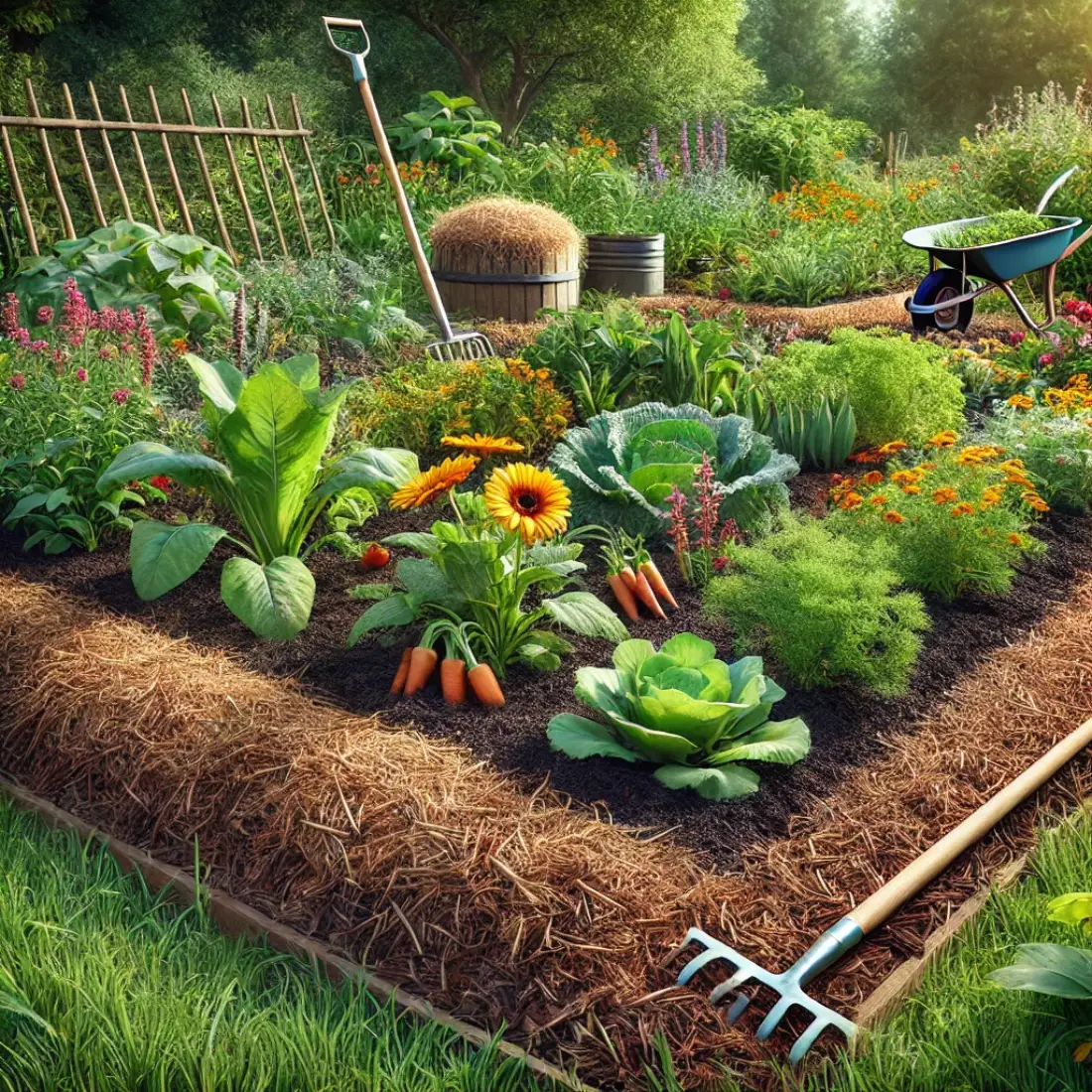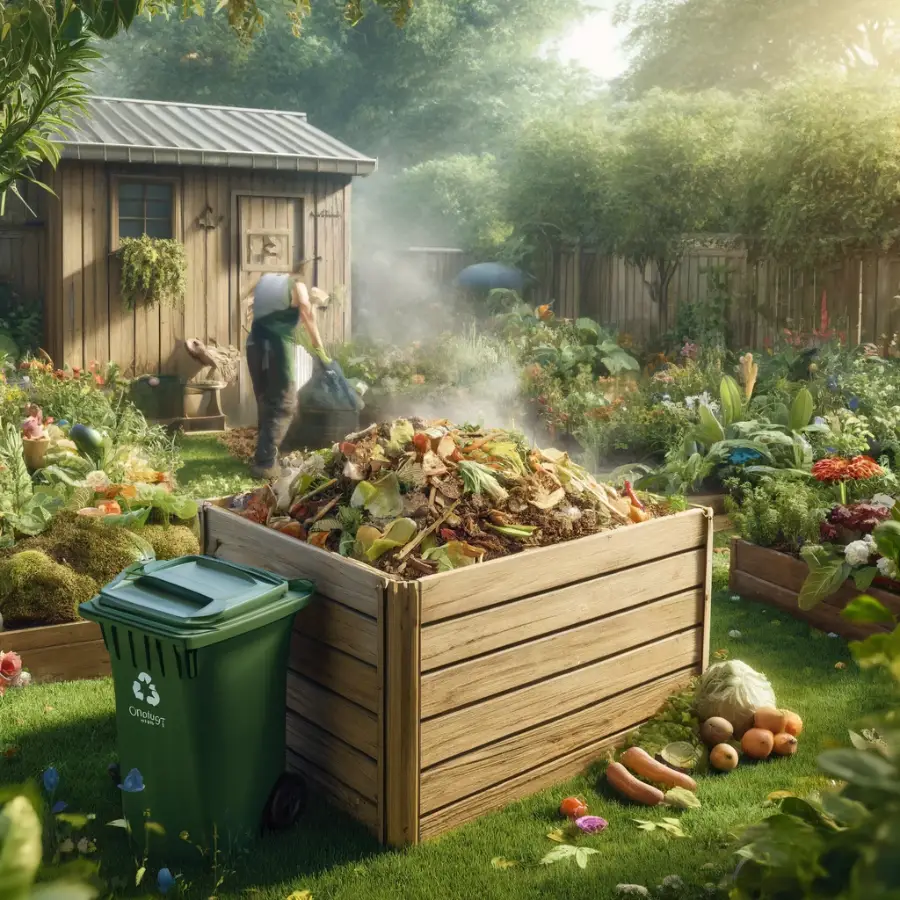Mulching is a vital practice in organic gardening that involves covering the soil with a protective layer of organic material. This layer can consist of various natural substances like compost, wood chips, straw, or grass clippings. The primary purpose of mulching is to improve soil health and plant growth while reducing the need for chemical fertilizers and pesticides.
Benefits of Organic Mulching
Organic mulching offers a multitude of benefits that significantly enhance the health and productivity of your garden.
Soil Health Improvement: Organic mulch improves soil structure as it decomposes, adding organic matter that enhances soil aeration and drainage. This process also promotes the activity of beneficial soil organisms like earthworms and microbes, which contribute to nutrient cycling and overall soil health.
Moisture Retention: One of the primary benefits of organic mulching is its ability to retain soil moisture. By reducing evaporation, mulch ensures that plants have a consistent supply of water. This is especially important during dry periods, as it reduces the need for frequent watering and conserves water resources.
Weed Suppression: A thick layer of organic mulch acts as a barrier to weed growth by blocking sunlight from reaching weed seeds. This reduces the need for chemical herbicides and manual weeding, saving time and effort while promoting a healthier, chemical-free garden.
Temperature Regulation: Mulch helps moderate soil temperature by keeping it cooler in summer and warmer in winter. This temperature regulation creates a stable environment for plant roots, reducing stress and promoting healthier growth.
Soil Erosion Prevention: By covering the soil, mulch protects it from the impact of heavy rains and wind, which can cause erosion. This protection helps maintain soil structure and prevents the loss of valuable topsoil.
Enhancement of Soil Fertility: As organic mulch decomposes, it releases nutrients into the soil, enriching it naturally. This slow-release fertilization supports plant growth without the need for synthetic fertilizers, promoting a more sustainable gardening practice.
Encouragement of Beneficial Organisms: Organic mulches create a hospitable environment for beneficial organisms like earthworms, beetles, and microbes. These organisms help break down the mulch, further enriching the soil and supporting a healthy ecosystem.
Types of Organic Mulch
Organic mulch is a versatile and effective way to enhance your garden’s health and productivity. Here are some common types of organic mulch and their benefits:
Compost
Compost is decomposed organic matter that enriches the soil with nutrients. It improves soil structure, promotes beneficial microbial activity, and enhances water retention. To apply, spread a 2-3 inch layer of compost around plants, avoiding direct contact with stems to prevent rot.
Wood Chips and Bark
Wood chips and bark are excellent for long-lasting mulch. They decompose slowly, providing long-term soil benefits. They are particularly effective around trees, shrubs, and perennials. Use a 3-4 inch layer, replenishing annually as needed. Pine bark is especially beneficial for acid-loving plants like blueberries and azaleas.
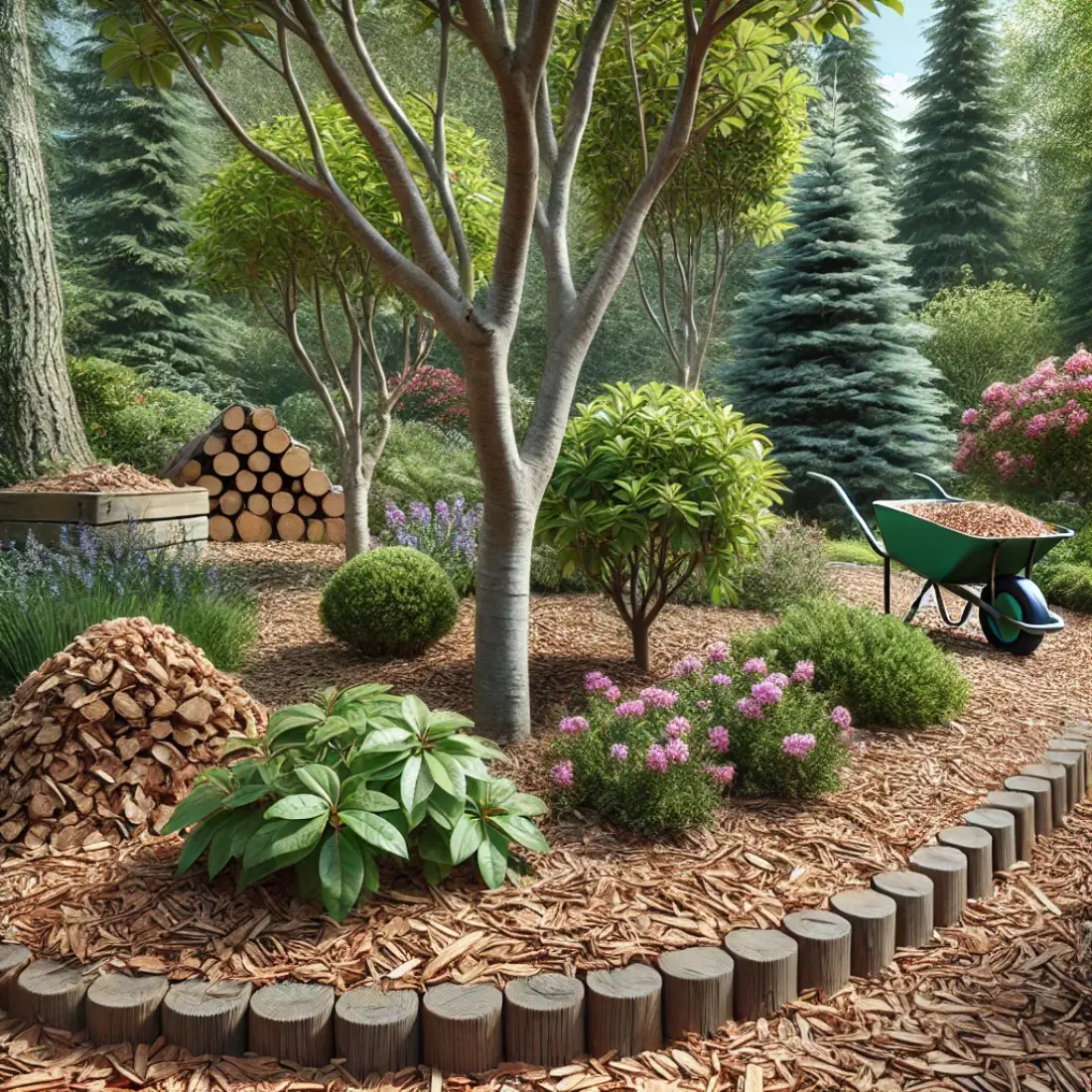
Straw and Hay
Straw and hay are lightweight mulches that break down quickly, adding organic matter to the soil. Straw is preferable for vegetable gardens as it contains fewer weed seeds compared to hay. Apply a 2-3 inch layer to suppress weeds and retain moisture. Be cautious of using hay as it can introduce weed seeds into your garden.
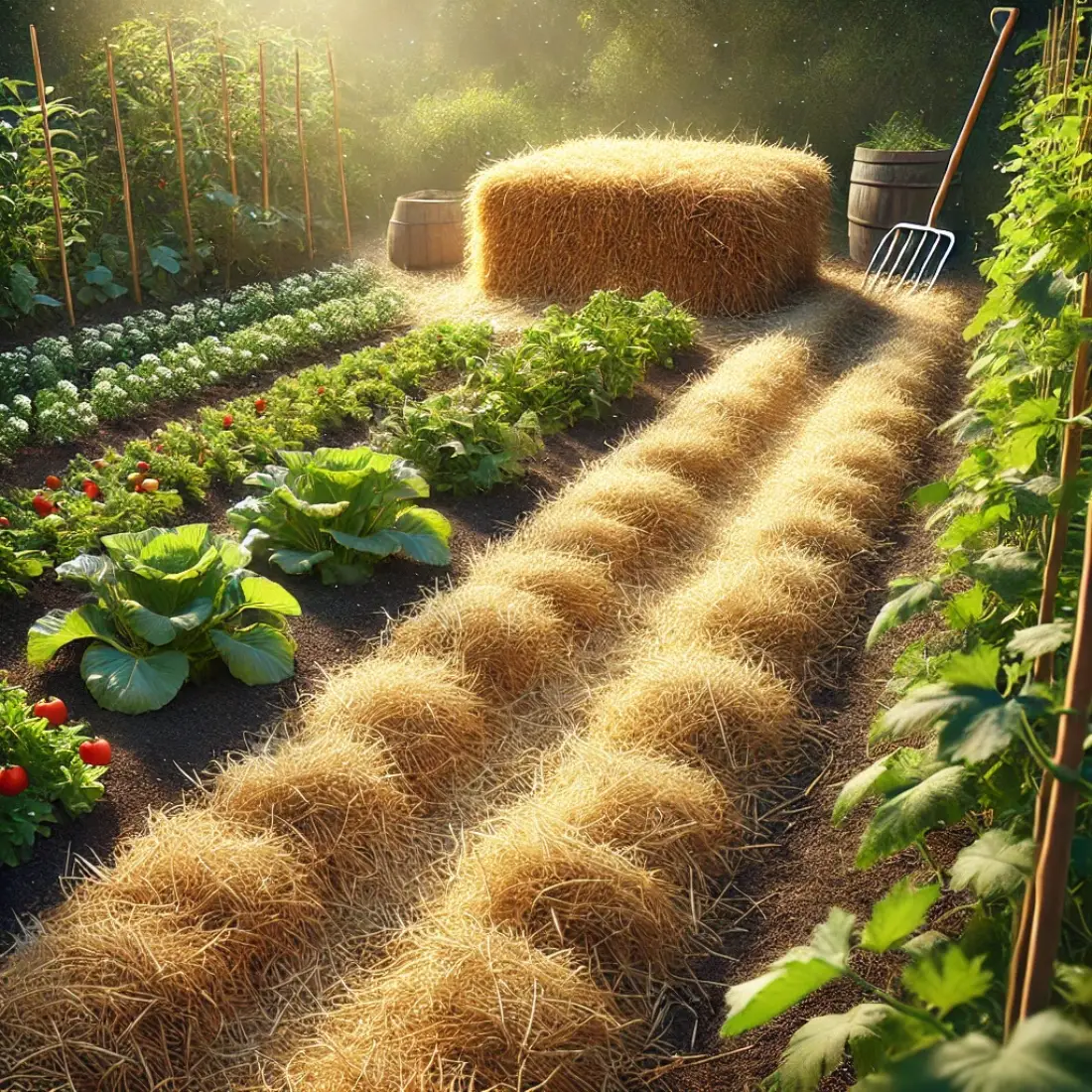
Grass Clippings
Grass clippings are readily available and rich in nitrogen, making them an excellent mulch for vegetable gardens. Apply a thin layer (1-2 inches) to avoid matting, which can prevent water and air penetration. Grass clippings decompose quickly, so replenish them frequently.
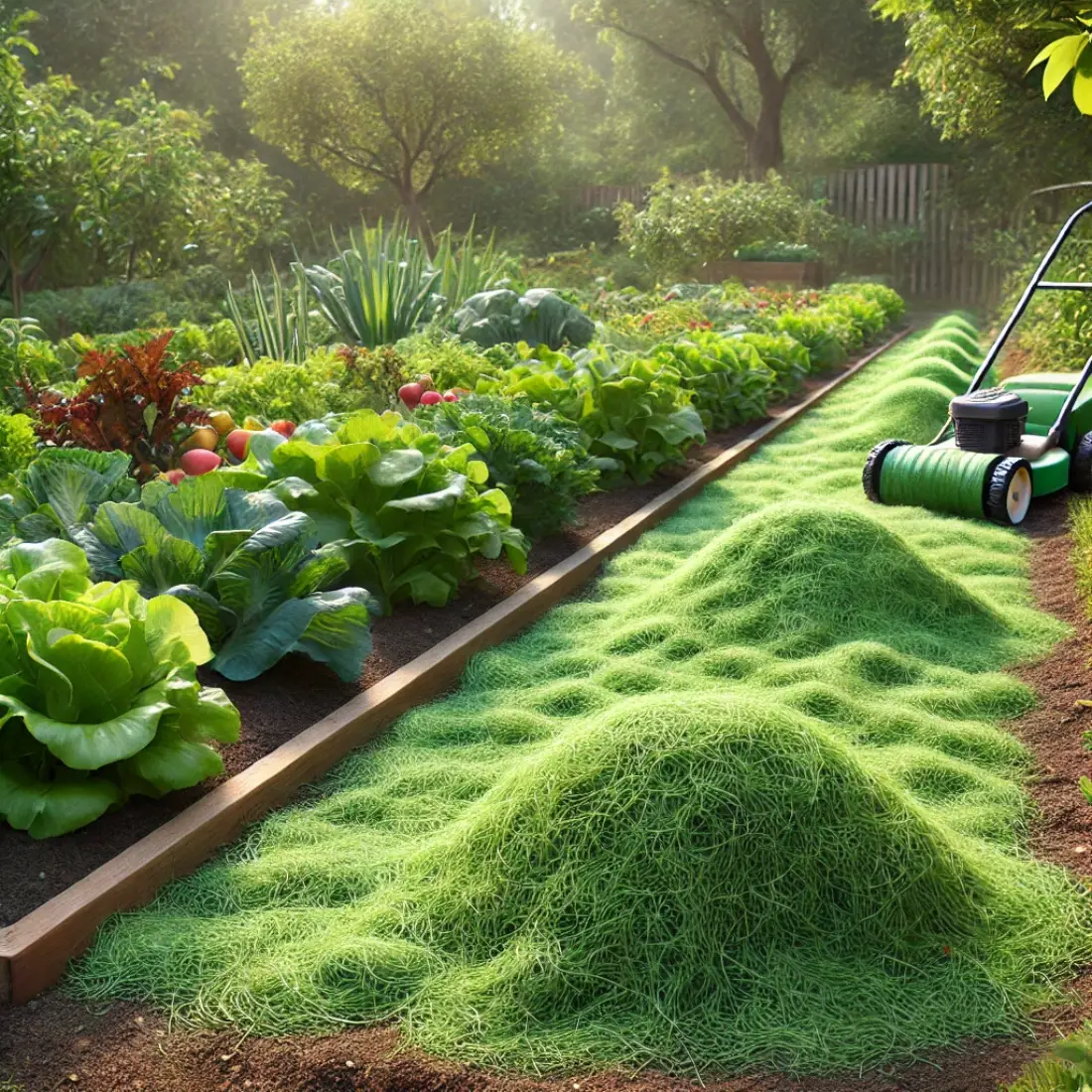
Leaf Mulch
Leaf mulch, also known as leaf mold, is made from decomposed leaves. It is an excellent soil conditioner, improving structure and fertility. Collect leaves in the fall, shred them, and apply a 2-3 inch layer around plants. Leaf mulch is ideal for flower beds, vegetable gardens, and around trees and shrubs.

Pine Needles
Pine needles, or pine straw, are lightweight and decompose slowly. They are particularly useful for acidifying soil, making them ideal for plants like rhododendrons, azaleas, and blueberries. Apply a 2-3 inch layer, which allows water to penetrate while preventing weed growth.
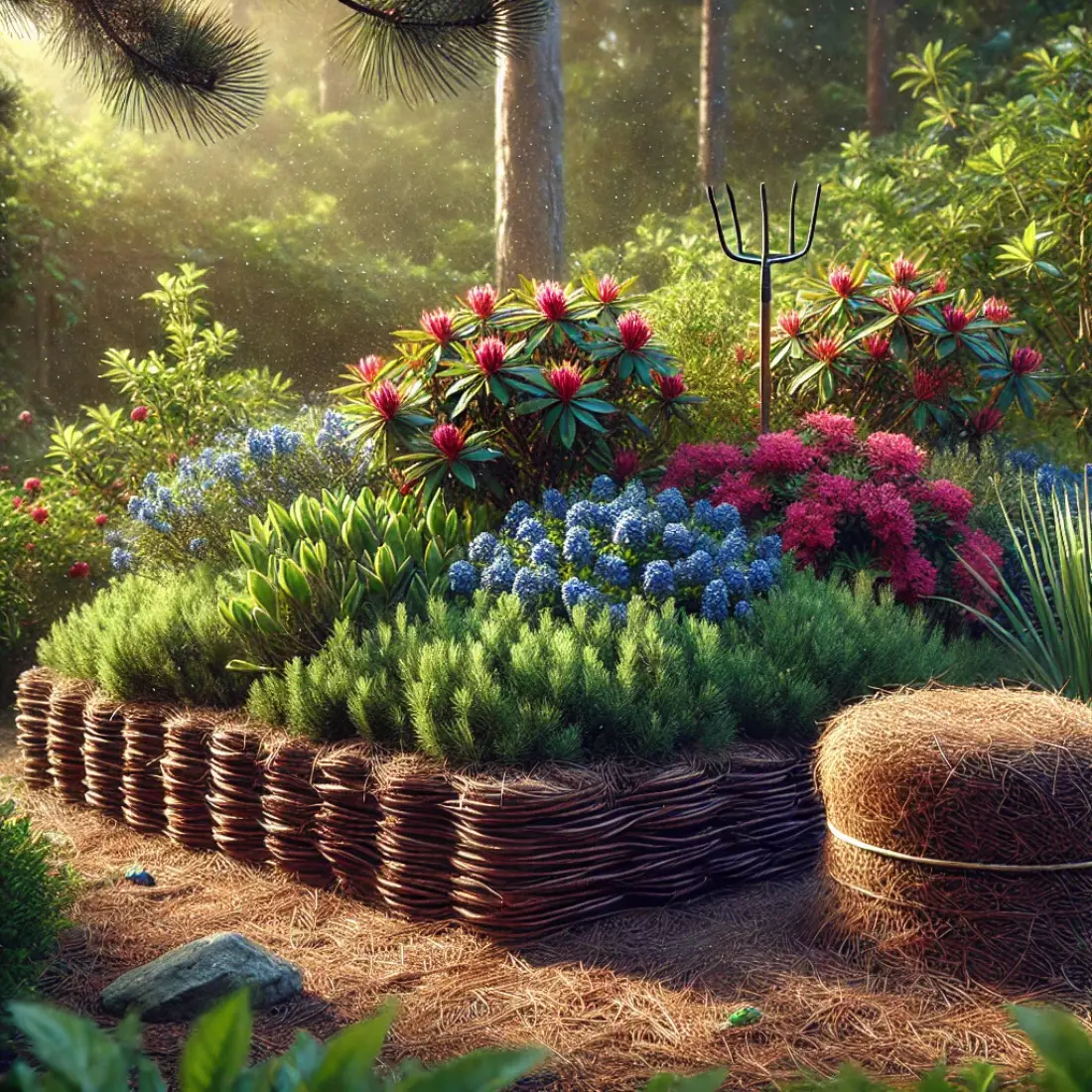
Cocoa Hulls
Cocoa hulls are an attractive mulch option with a pleasant aroma. They are rich in nitrogen and decompose moderately, adding nutrients to the soil. Spread a thin layer (1-2 inches) around plants. Be mindful that cocoa hulls can be toxic to pets if ingested.
How to Apply Organic Mulch
Applying organic mulch correctly can greatly enhance your garden’s health and productivity.
1. Prepare the Soil Before applying mulch, clear the area of weeds and debris. This helps prevent weeds from growing through the mulch and ensures a clean, healthy base. Water the soil thoroughly to ensure it has adequate moisture before mulching.
2. Choose the Right Mulch Select the appropriate type of organic mulch for your garden’s needs. Consider factors such as the plant type, soil condition, and climate. Common choices include compost, wood chips, straw, grass clippings, leaf mulch, and pine needles.
3. Apply the Mulch at the Right Depth The depth of mulch application varies depending on the type of mulch and the plants being mulched. Generally, a layer of 2-4 inches is effective:
- Compost: 2-3 inches
- Wood Chips and Bark: 3-4 inches
- Straw and Hay: 2-3 inches
- Grass Clippings: 1-2 inches
- Leaf Mulch: 2-3 inches
- Pine Needles: 2-3 inches
4. Spread the Mulch Evenly Distribute the mulch evenly around the plants. Ensure it covers the soil uniformly without leaving gaps. Avoid piling mulch directly against plant stems or tree trunks to prevent rot and pest issues. Keep a gap of about 2-3 inches around stems and trunks.
5. Maintain Mulch Layers Organic mulch decomposes over time, enriching the soil with nutrients. Check the mulch layer periodically and replenish it as needed to maintain the desired depth. Typically, you should add fresh mulch annually.
6. Consider Seasonal Mulching Adjust your mulching practices according to the seasons. In spring, apply mulch to retain moisture and suppress weeds. In fall, add a thicker layer to insulate the soil and protect plant roots during winter.
7. Observe and Adjust Monitor your garden to see how the mulch affects plant growth and soil health. Adjust the type and amount of mulch based on observations and changing conditions. Regularly checking and maintaining the mulch ensures its continued effectiveness.
Best Practices for Specific Plants
Applying organic mulch can vary depending on the type of plants in your garden. Here are some tailored mulching practices for various plant categories:
Vegetables
- Ideal Mulch: Straw, grass clippings, and compost are excellent for vegetable gardens.
- Application: Apply a 2-3 inch layer of straw or grass clippings around your vegetables. Ensure the mulch is kept away from the stems to prevent rot.
- Benefits: Retains moisture, suppresses weeds, and gradually adds nutrients to the soil as it decomposes.
Fruit Trees and Bushes
- Ideal Mulch: Wood chips and bark mulch are ideal for fruit trees and bushes.
- Application: Spread a 3-4 inch layer of wood chips or bark mulch around the base, extending out to the tree’s drip line. Keep mulch a few inches away from the trunk to avoid rot and pests.
- Benefits: Helps retain soil moisture, suppresses weeds, and adds organic matter to the soil over time.
Flower Beds
- Ideal Mulch: Leaf mulch, compost, and cocoa hulls work well in flower beds.
- Application: Apply a 2-3 inch layer of leaf mulch or compost around flowers. Cocoa hulls can also be used for a decorative touch and should be applied in a thin layer (1-2 inches).
- Benefits: Improves soil structure, retains moisture, and enhances the aesthetic appeal of the garden.
Ornamental Gardens
- Ideal Mulch: Pine needles, wood chips, and bark mulch are suitable for ornamental plants.
- Application: Spread a 2-3 inch layer of pine needles or wood chips around ornamental plants. For acidic soil lovers like azaleas and rhododendrons, pine needles are particularly beneficial.
- Benefits: Retains moisture, prevents weed growth, and can help acidify the soil for plants that thrive in lower pH conditions.
Herb Gardens
- Ideal Mulch: Straw, compost, and leaf mulch are suitable for herb gardens.
- Application: Apply a 2-inch layer of straw or compost around herbs. Ensure good airflow around the plants by not piling mulch too close to the stems.
- Benefits: Maintains soil moisture, suppresses weeds, and improves soil fertility as it decomposes.
Common Mistakes to Avoid
While mulching is highly beneficial, it’s crucial to avoid common mistakes that can undermine its effectiveness. Here are some pitfalls to steer clear of:
- Over-Mulching: Applying too much mulch can suffocate plant roots, leading to poor growth and root rot. Stick to recommended depths: 2-4 inches for most organic mulches.
- Mulch Volcanoes: Piling mulch against the stems or trunks of plants can cause rot and attract pests. Always keep mulch a few inches away from plant bases to ensure proper air circulation and prevent stem rot.
- Using Contaminated Mulch: Avoid mulch that contains weed seeds, pathogens, or chemical residues. Always source mulch from reliable, organic sources to prevent introducing harmful elements into your garden.
- Ignoring Seasonal Needs: Mulching practices should be adjusted seasonally. For example, adding a thicker layer in fall can insulate plants during winter, while a thinner layer in spring can help retain moisture without overheating the soil.
- Not Replenishing Mulch: Organic mulch decomposes over time, reducing its effectiveness. Regularly check the mulch layer and replenish it as needed to maintain the desired depth and benefits.
- Using the Wrong Mulch for Specific Plants: Certain mulches are better suited for specific plants. For example, using pine needles for acid-loving plants like azaleas is beneficial, while compost may be better for vegetable gardens. Match the mulch type to the plant’s needs for optimal results.
- Ignoring Soil Conditions: Before applying mulch, test your soil and address any underlying issues like pH imbalance or poor drainage. Mulch can enhance soil conditions, but it won’t fix fundamental soil problems on its own.
Enhancing Mulch with Organic Additives
Boosting the effectiveness of your mulch with organic additives can significantly improve your garden’s health and productivity. Here are some ways to enhance your mulch:
Adding Compost or Manure: Incorporating compost or well-aged manure into your mulch can enrich the soil with essential nutrients. Spread a thin layer of compost or manure beneath the mulch to provide a steady supply of organic matter as it decomposes. This not only improves soil fertility but also enhances soil structure and water retention.
Using Natural Pest Repellents: Certain organic materials can help repel pests when mixed with mulch. For example, adding crushed eggshells can deter slugs and snails, while coffee grounds can repel ants and other insects. These natural repellents also add nutrients to the soil as they break down.
Incorporating Soil Amendments: Adding soil amendments like bone meal, blood meal, or fish meal to your mulch can provide additional nutrients that promote plant growth. These amendments release nutrients slowly, ensuring a consistent supply over time. Mix these amendments with your mulch or apply them directly to the soil before mulching.
Mulch Tea: Create a nutrient-rich mulch tea by soaking organic mulch in water for several days. This tea can be poured around plants to provide an immediate nutrient boost. Use the soaked mulch as a top dressing to further enrich the soil.
Layering with Cardboard or Newspaper: Placing a layer of cardboard or newspaper under your mulch can enhance weed suppression and add organic matter to the soil as it decomposes. Ensure the materials are free of inks and chemicals, and wet them before covering with mulch.
FAQs About Organic Mulching
What is the best type of organic mulch for vegetable gardens?
The best types of organic mulch for vegetable gardens are straw, grass clippings, and compost. These mulches help retain moisture, suppress weeds, and improve soil fertility as they decompose.
How often should I replace organic mulch?
Organic mulch should be replenished annually or as needed. As it decomposes over time, check the mulch layer regularly and add more to maintain the recommended depth of 2-4 inches.
Can I use mulch year-round?
Yes, mulch can be used year-round. In spring and summer, it helps retain moisture and suppress weeds. In fall and winter, it insulates the soil and protects plant roots from extreme temperatures.
How does mulching affect soil pH?
Some mulches, like pine needles, can acidify the soil slightly, which is beneficial for acid-loving plants. Most organic mulches have a neutral or minimal impact on soil pH.
Can I use fresh grass clippings as mulch?
Yes, but use a thin layer (1-2 inches) to prevent matting, which can block water and air from reaching the soil. It’s best to let grass clippings dry out slightly before applying them as mulch.
Is it necessary to remove old mulch before applying new mulch?
It’s not necessary to remove old mulch unless it has compacted significantly or harbors pests or diseases. You can add new mulch on top of the old layer to maintain the desired depth.
How can I prevent mulch from blowing away?
To prevent mulch from blowing away, use heavier materials like wood chips or bark mulch. Applying a thicker layer and wetting the mulch can also help keep it in place.
Can I use leaves from my yard as mulch?
Yes, leaves make excellent mulch. Shred them first to speed up decomposition and prevent them from matting. Leaf mulch improves soil structure and adds nutrients as it breaks down.
What are the signs of over-mulching?
Signs of over-mulching include a sour smell from anaerobic decomposition, plant roots growing into the mulch instead of the soil, and poor plant growth. Avoid applying more than 4 inches of mulch.
How do I mulch around trees and shrubs?
Apply a 3-4 inch layer of mulch around trees and shrubs, extending out to the drip line. Keep the mulch a few inches away from the trunk or stems to prevent rot and pest problems.

